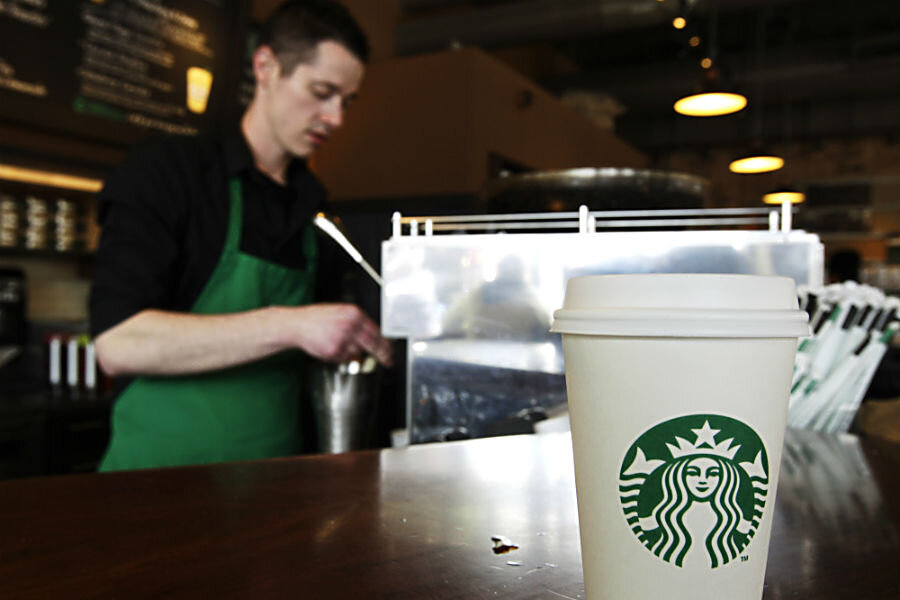Is Starbucks shorting its latte drinkers?
Loading...
Two Starbucks customers are suing the coffee chain on behalf of its latte drinkers, for allegedly skimping on its brewed-espresso-and-milk drinks.
A class-action lawsuit filed Wednesday by latte drinkers Siera Strumlauf and Benjamin Robles against the Starbucks Corporation claims that the Seattle-based company systematically shorts its customers around 25 percent of the beverages, which are “uniformly underfilled pursuant to a standardized recipe.”
The plaintiffs say the practice has been used across all varieties of Starbucks lattes, from flavored products such as pumpkin spice and eggnog lattes to to sugar-free, non-fat “Skinny” versions of the milk coffees.
Ms. Strumlauf and Mr. Robles add that the underfilling takes place in all latte sizes. While “Starbucks represents on its menu that its Lattes contain '12 fl. oz.' for a Tall, '16 fl. oz.' for a Grande, and '20 fl. oz.' for a Venti... Tall Lattes are not 12 fluid ounces, Grande Lattes are not 16 fluid ounces, and Venti Lattes are not 20 fluid ounces."
“Starbucks cheats purchasers by providing less fluid ounces in their Lattes than represented,” the suit alleges.
Strumlauf and Robles say that the alleged widespread underfilling began in 2009 and is done to save the company money on milk. The pair added that the recipes call for baristas to leave a clearance of “1/4 inch below cup rim” when pouring final product, yet Tall, Grande, and Venti cups accommodate exactly 12, 16, and 20 ounces so that “when used in conjunction with its standardized recipes, Starbucks’ serving cups do not permit” full lattes as advertised.
The duo use recipe information gained from Starbucks’ official Beverage Resource Manual, as well as standardized pitchers used in latte preparation to show that the ingredients and process do not allow for full lattes as marketed by the chain. They also use their own anecdotal evidence, saying that they personally noticed underfilled cups when shopping at Starbucks, and that the pair’s legal team tested latte sizes “at different stores, in different states, in different sizes, and in different flavors,” finding an approximate average beverage deficit of 25 percent.
“Starbucks has saved countless millions of dollars in the cost of goods sold and was unjustly enriched by taking payment for more product than it delivers,” the suit states. The plaintiffs say Starbucks violated several rules and laws, and sued the company on eight counts including negligent misrepresentation and fraud.
If approved, the class action suit could benefit every Starbucks customer in the United States who purchased a latte since 2009.
Starbucks says that Strumlauf and Robles’ allegation is unfounded.
“We are aware of the plaintiffs' claims, which we fully believe to be without merit,” a Starbucks spokesperson told Eater. “We are proud to serve our customers high-quality, handcrafted and customized beverages, and we inform customers of the likelihood of variations.”






